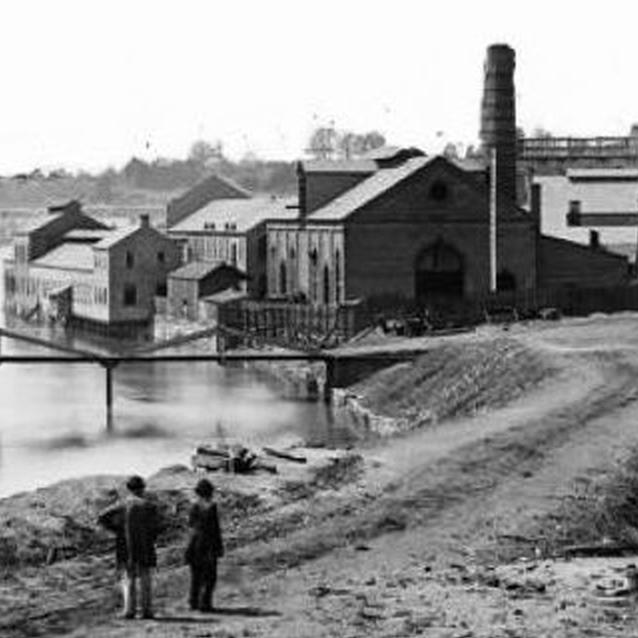On the eve of the Civil War, Richmond, Virginia was the most industrialized city in the South. Located along the James River and with five railroads radiating out from the city, Richmond grew as a marketplace; its riverfront becoming crowded with mills and warehouses. Among these structures was a growing industrial complex that had at its core the Tredegar Iron Works.
As an industrial center Richmond had to be protected, for in the spring of 1861 the Tredegar Iron Works was the only facility in the South capable of turning out heavy ordnance or munitions.

Library of Congress
Incorporated in 1837, the Tredegar Iron Works of Richmond began as a small forge and rolling mill. The railroads and canal brought with them pig iron and raw materials that supplied the Iron Works. Under the supervision of Joseph R. Anderson, the Iron Works expanded. Anderson was able to secure contracts with the federal government, and the once-small mill became a foundry, producing cannons for the country's armed forces.
In 1847, in response to striking white workers, Anderson introduced slave labor into his facility. This controversial move helped cut costs and contributed to the Iron Works' continued growth. By 1860 the Tredegar Iron Works had become the largest producer of iron in the South, with a complex covering nearly five acres and employing close to 800 laborers, both black and white, free and slave.
On April 17, 1861, three days after the fall of Fort Sumter, Virginia left the Union and joined the fledgling Confederacy. The importance of Richmond was not lost on southern leaders. Virginia, the "Old Dominion," was the most populous of the Southern states. It represented revolution and freedom, being the home of Madison, Jefferson, Washington and Monroe. From a strategic standpoint, however, Richmond was in a poor location, easily threatened from the northern capital in Washington, a mere 100 miles away. Surely Richmond would become a target for the invading armies and its loss would greatly hamper the Southern war effort.
As an industrial center, however, Richmond had to be protected, for in the spring of 1861 the Tredegar Iron Works was the only facility in the South capable of turning out heavy ordnance or munitions. On May 29, 1861, the Confederate capital moved from Montgomery, Alabama, to Richmond. By shifting the seat of government, the Confederacy declared its commitment to the defense of Richmond and the city's vital resources.
Tredegar proved invaluable to the Confederacy. Despite shortages in labor and raw materials, nearly 1100 cannon were produced in its foundries, while the rolling mills turned out iron plating for Confederate naval gunboats. Although numerous efforts were made to capture Richmond, and many battles fought on the city's doorstep, it never fell to Union hands, and Tredegar never ceased operation until April 2, 1865.
That evening, the Confederate government and army abandoned the city.
Evacuation fires swept through the business district, rapidly approaching Tredegar, but Anderson's workers stayed at their posts and made sure that the facility did not fall to rampaging looters or the flames that were consuming the city. Anderson's efforts to save Tredegar succeeded and in the months and years following the city's collapse, the Iron Works played an instrumental role in rebuilding the defeated South.
Last updated: August 14, 2017
